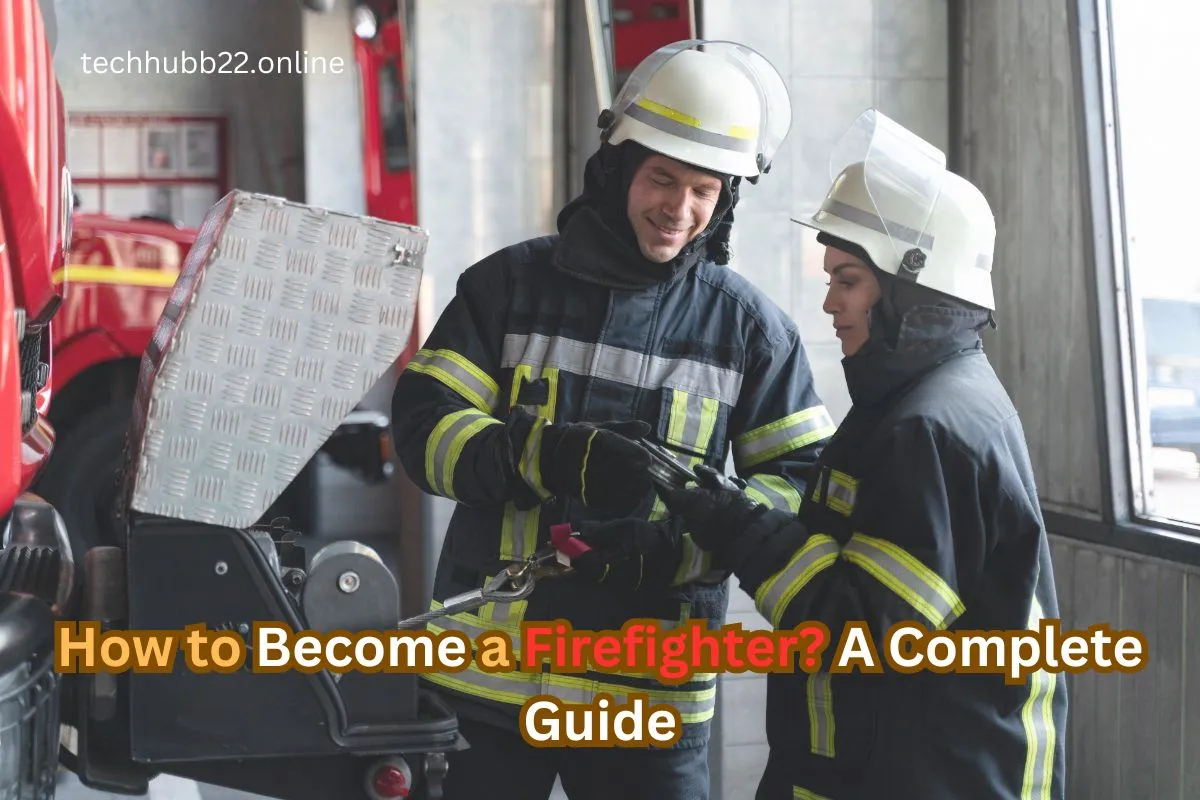Become a firefighter is a rewarding career that demands dedication, bravery and an ability to make a positive difference in people’s lives. For anyone who desires making an impactful difference this could be their perfect occupation.
Have you ever considered what it would take to become the hero when everyone else flees in fear? This step-by-step guide can help you become an firefighter.
Firefighter jobs begin by meeting basic qualifications like fitness and education. Once these have been met, special training through fire academy programs should ensue to gain knowledge in areas like fire suppression, emergency intervention and medical response as well as technical expertise, problem solving skills and teamwork that is vital in this profession.
What Does a Firefighter Do?
Firefighters perform much more than battle fires; they rescue, treat and respond to chemical spills and traffic accidents as well. Furthermore, fire service professionals inspect, educate and engage the local community – each task may vary but all contribute towards protecting neighbourhoods.
What to Expect as a Firefighter?
Firefighting requires both physical and emotional labour; unexpected 24-hour shifts may arise without notice, with firefighters required to lift heavy equipment, climb buildings, rescue people from burning structures, as well as deal with high heat, smoke, flammables and hazards during work. Aside from physical risk factors, firefighters also require emotional resilience since they witness tragic incidents oftentimes and need to remain composed during difficult circumstances.
Steps to Becoming a Firefighter
Becoming a firefighter typically involves several stages. Here is how you can begin this journey:
- Essential Requirements for Fire Department Employment: Most fire departments require applicants to meet basic eligibility requirements: they must be 18 or over, possess either high school diploma or GED equivalent credentials, as well as possess both a driver’s license and driver background check/drug screening test certifications.
- Learn to become EMT Certified: Many firefighters require applicants to become EMT-certified as part of the application process, since firefighters often act as first responders in medical emergencies.
- Pass the Physical and Written Exams: In order to demonstrate your physical capabilities, you’ll need to pass the Candidate Physical Ability Test (CPAT), which entails exercises such as stair climbs, hose drags and rescue simulations. Furthermore, you will also have to complete a written exam that tests your understanding of firefighting methods including safety protocols as well as problem solving knowledge.
- Fire Academy: If selected for the program, if chosen you will attend a fire academy where you’ll receive comprehensive training in all aspects of fire-fighting such as rescue methods and prevention as well as fire-fighting itself. Most academy programs last several months.
- After Completing Training: Once your training is complete, an initial probationary period will commence in which you gain practical experience under guidance from senior firefighters.
Vocational vs. Academic Routes to Becoming a Firefighter
There are two routes for becoming a firefighter. formal training or academic.
- Vocational Path: This path concentrates on the practical abilities and certificates. Many firefighters who want to become firefighters attend the community college or vocational institute in order to recieve the EMT certification as well as knowledge of fire science.
- Academic Pathway: There are some participants opt to pursue an education from fire science, or in a related field like emergency management. Although a college education isn’t always necessary but it could increase your chances of being competitive and provide leadership opportunities.
Academic Routes to Becoming a Firefighter
If you opt for the academic route, you can pursue an associate’s or bachelor’s degree in fire science, emergency services, or public safety administration. If you want to become a firefighter through academic study, associate’s and bachelor’s degrees in fire science, emergency services administration, or public safety administration can teach you firefighting tactics, fire prevention, hazardous materials handling, and incident command systems, as well as leadership, problem-solving, and advanced firefighting techniques.
Do You Need to Go to University to Become a Firefighter?
A college degree isn’t necessary to become an emergency responder However, it will benefit. The majority of fire departments focus on practical skills like training for physical fitness as well as EMT accreditation. But, getting a higher education could help you stand out from the other contestants and could be advantageous when you’re seeking specific roles or a management position in the near future.
Firefighter Jobs
Positions for firefighters are usually offered by municipal fire departments, but there are also opportunities for private companies as well as government agencies. Certain fire departments provide jobs that are part-time or voluntary that can be ideal for you to collect experience. Firefighter positions that are full-time are often extremely competitive, and any previous experiences in community services or emergency service or other related fields can increase the chances of getting employed.
Firefighter Education and Qualifications
To qualify for a firefighter position, candidates usually need:
- High School Diploma or GED: This is the minimum educational requirement.
- EMT Certification: This is essential for many departments.
- Firefighter I and II Certifications: These are obtained after completing fire academy training and demonstrate competency in firefighting skills.
- Advanced Certifications (optional): Certain departments may require additional certifications such as HazMat or Paramedic licenses depending on their department and region, including HazMat and Paramedic certifications.
Salaries
The pay of firefighters varies according to their location, experience, and the size of the department. According to the latest data the median annual wage of firefighters across the U.S. is about $50,850. The top-paying states such as California as well as New York, offer higher average wages, which range between $80,000 to $90,000. year. Firefighters can also enjoy benefits like medical insurance, pensions as well as overtime compensation.
Firefighter Career
Firefighters have several progression and specialisation options. Firefighters may become fire inspectors, arson investigators, or chiefs of fire, or train in hazardous materials and technical rescue to become chiefs. Firefighters who train regularly may become highly trained professionals with room to progress.
Conclusion
To become a firefigher, by joining the fire service is difficult yet rewarding. Finding fundamental credentials, passing rigorous physical tests, and completing fire academy training takes passion, commitment, and tenacity. Whether you choose academic or vocational, continuous education and public service will lead to a meaningful career as a volunteer fireman who improves their town.
FAQs
1.What is the age minimum to be an official firefighter?
The standard age is 18 years old, though certain fire departments might allow junior firefighter programs to young people.
2.Do I require an EMT to be a firefighter?
Yes, many departmental firefighters require EMT certification since firefighters are often called out to medical emergencies.
3.What is the duration of the fire academy’s training?
Training at the fire academy typically lasts several months, based on the course.
4.Does firefighting require physical exertion?
Yes, firefighting is a demanding job that requires an enormous amount of physical endurance and strength, and applicants must take a physical aptitude test.
5.Are there ways to become a firefighter with no degree?
It is true that a degree is not necessary but more training in the field of fire science can increase opportunities for advancement.








